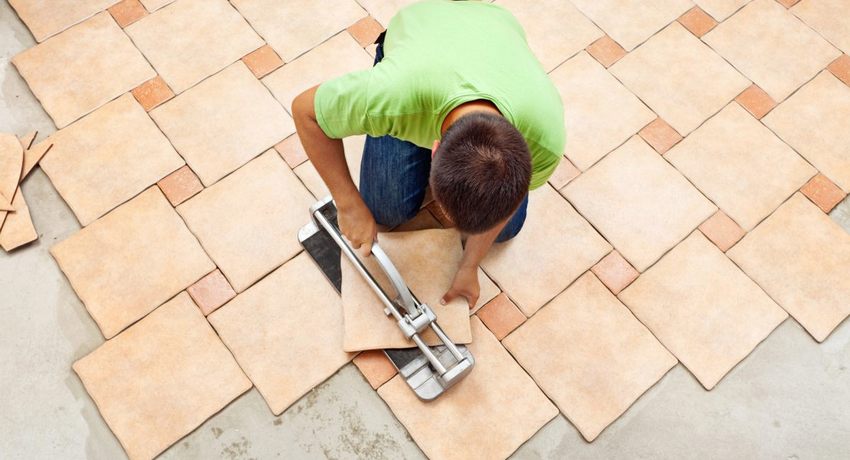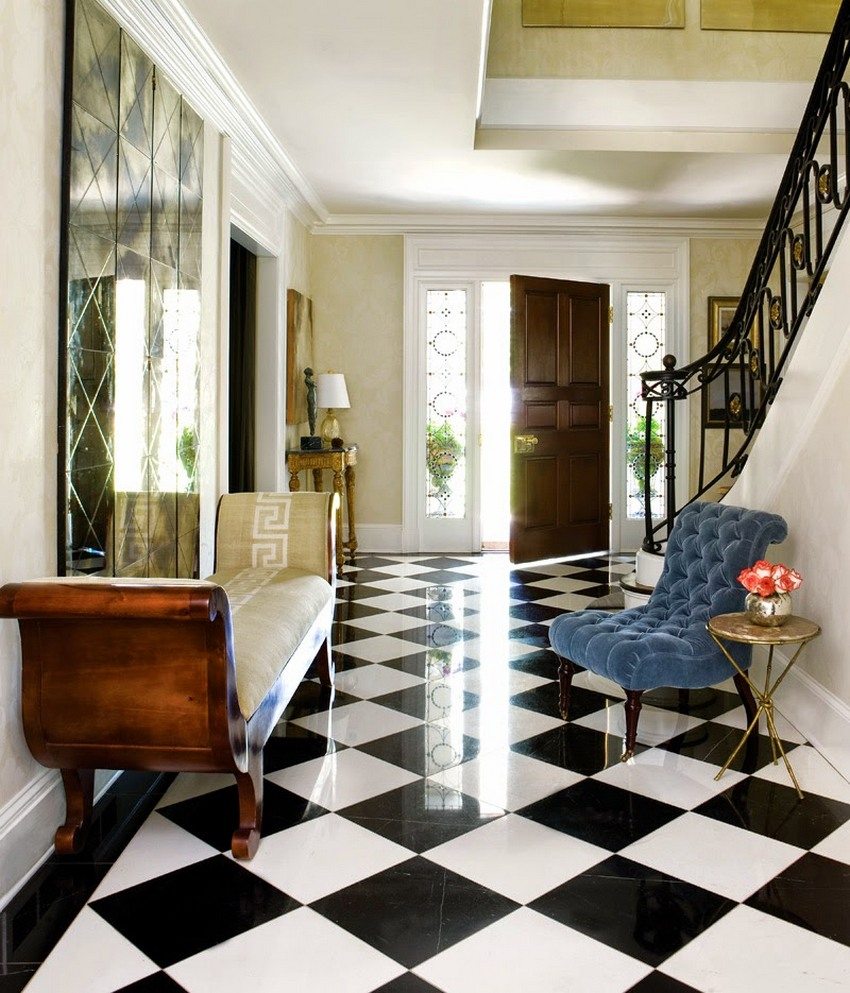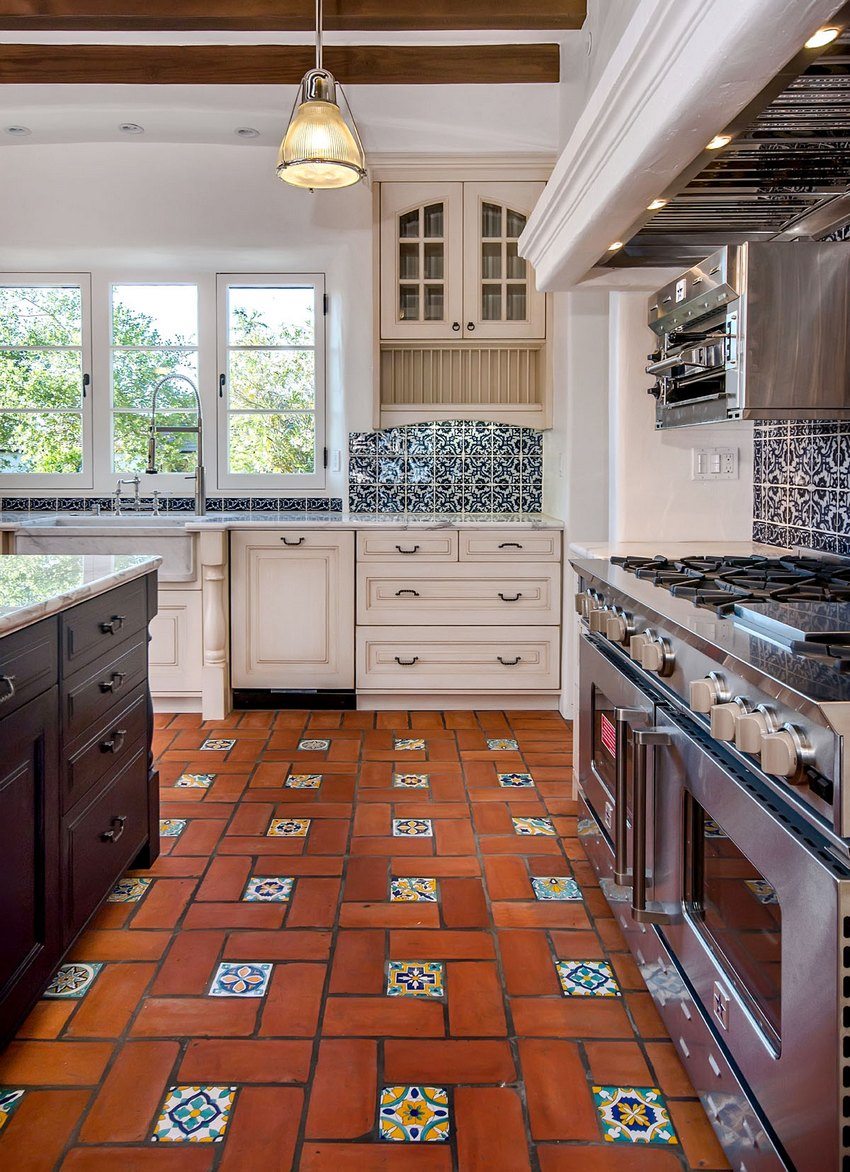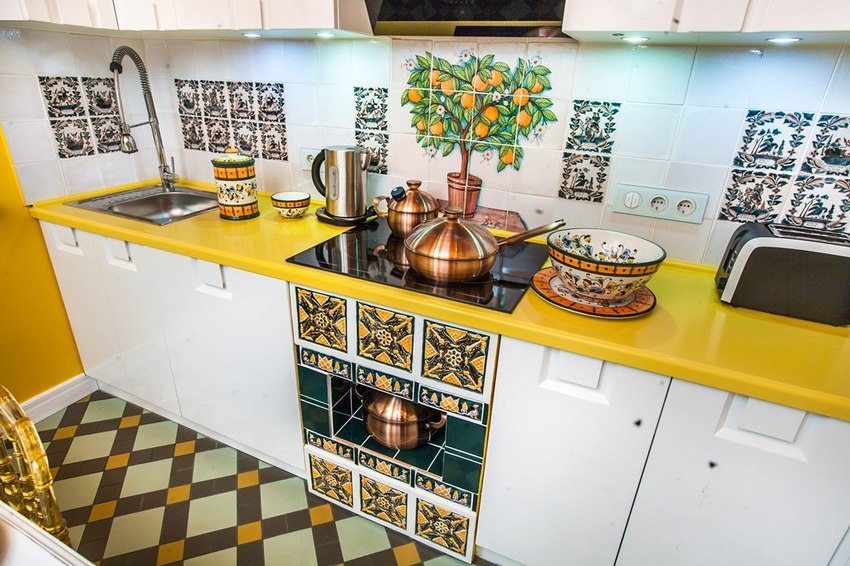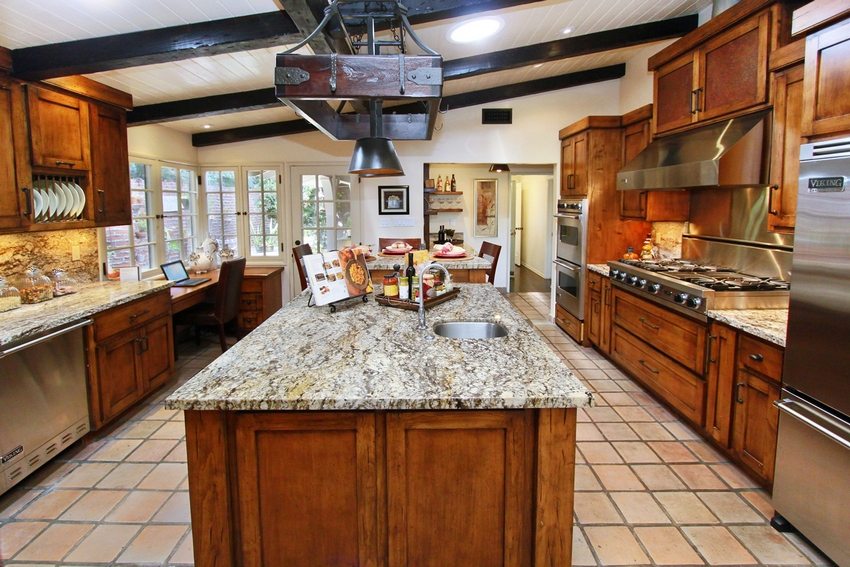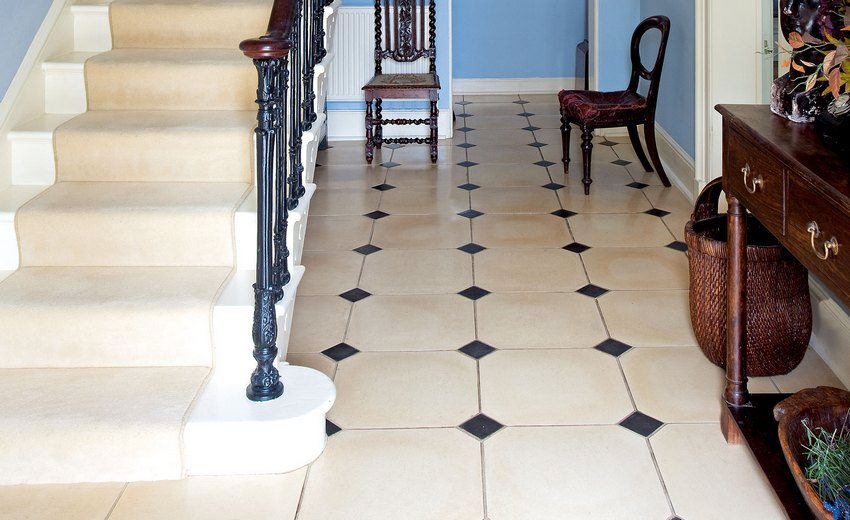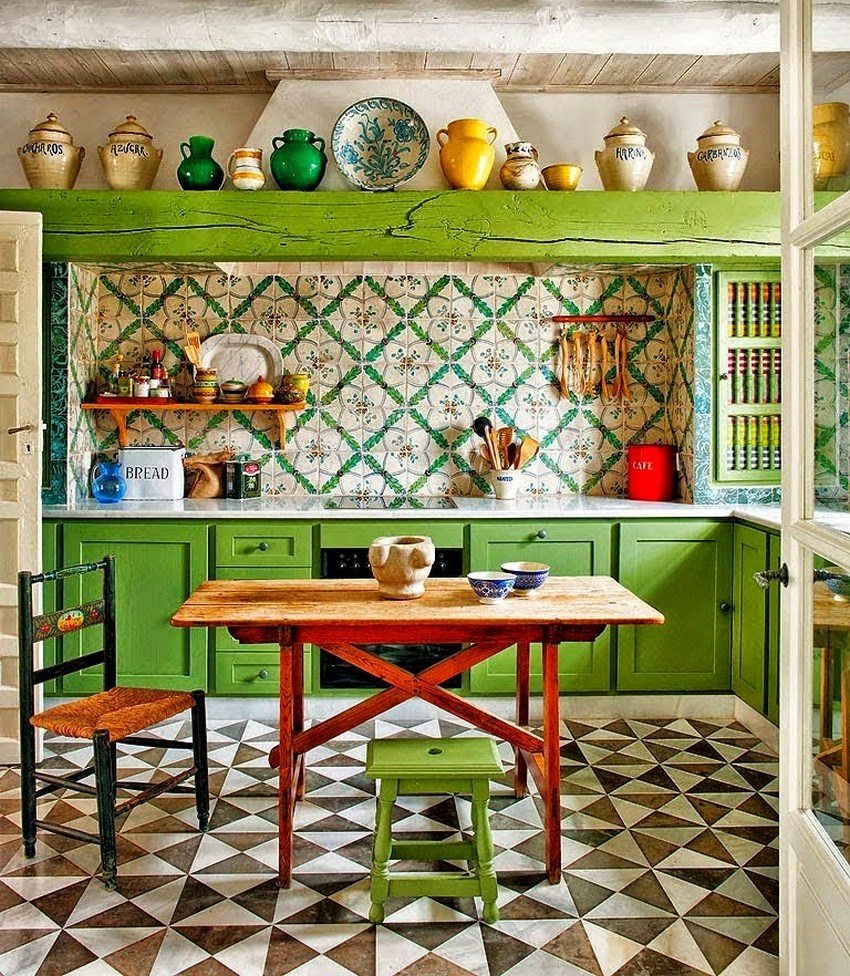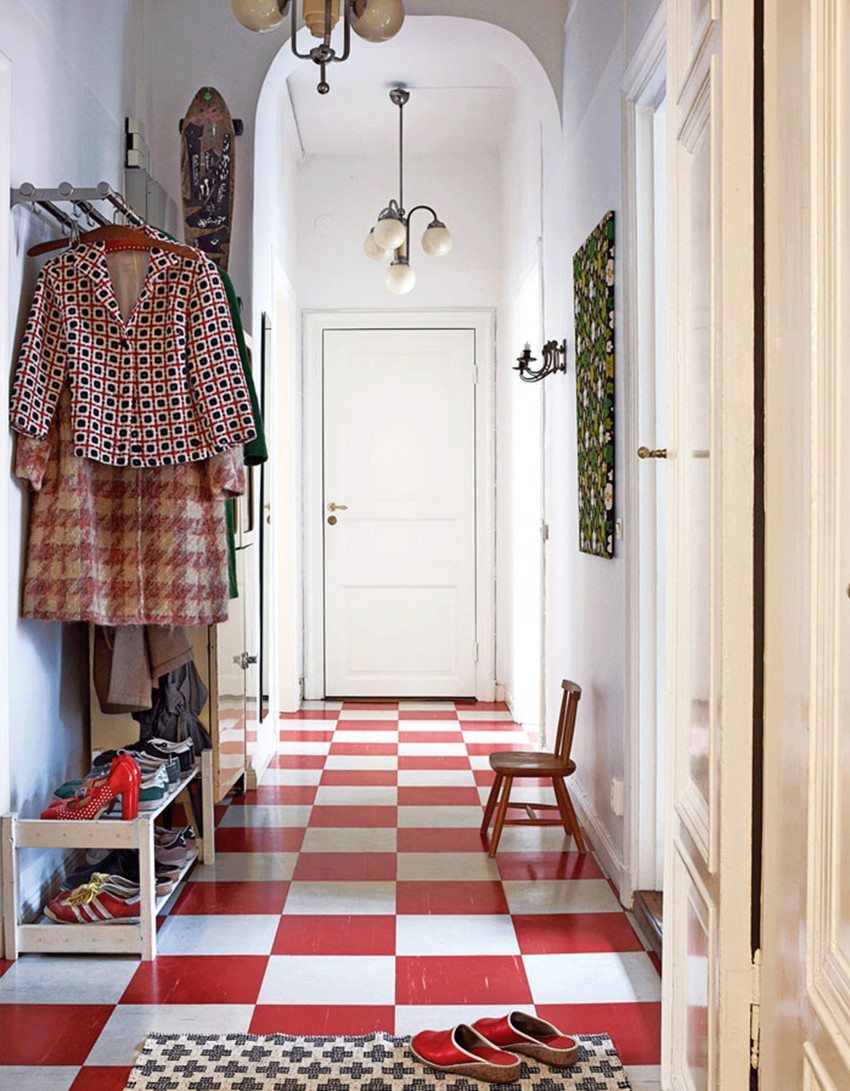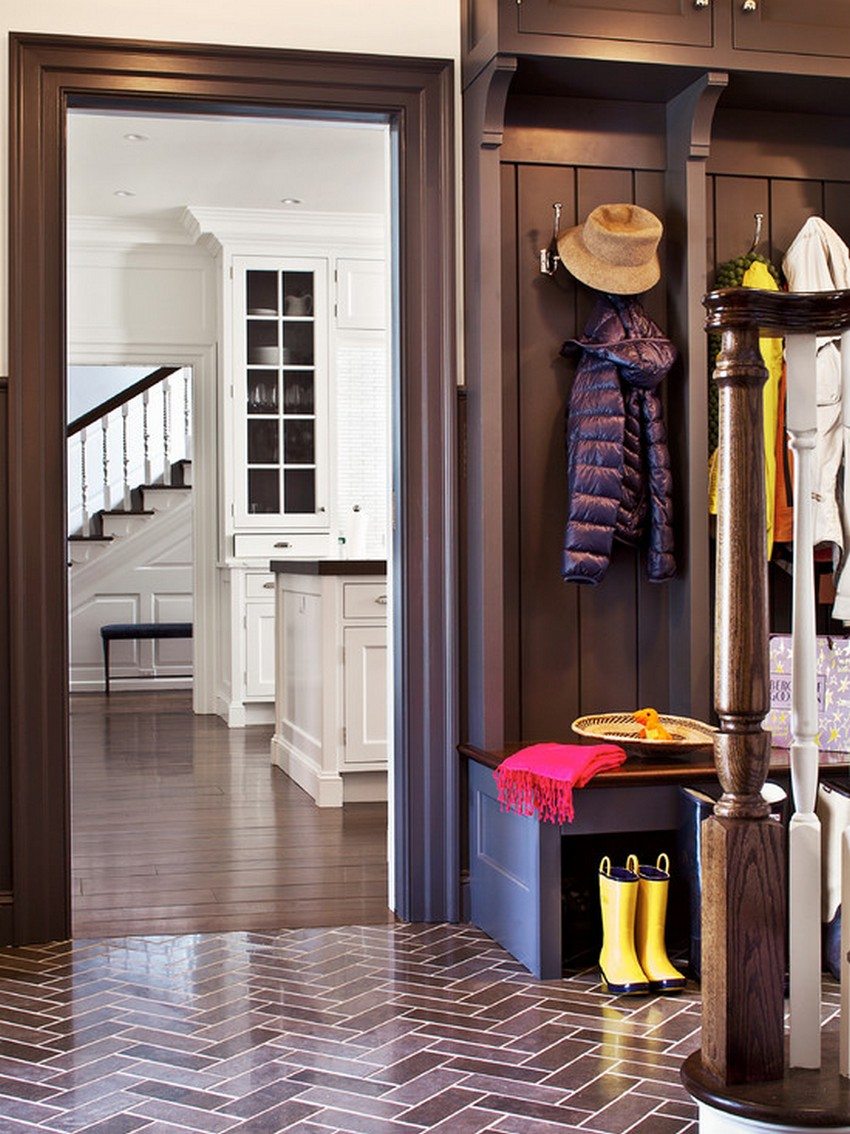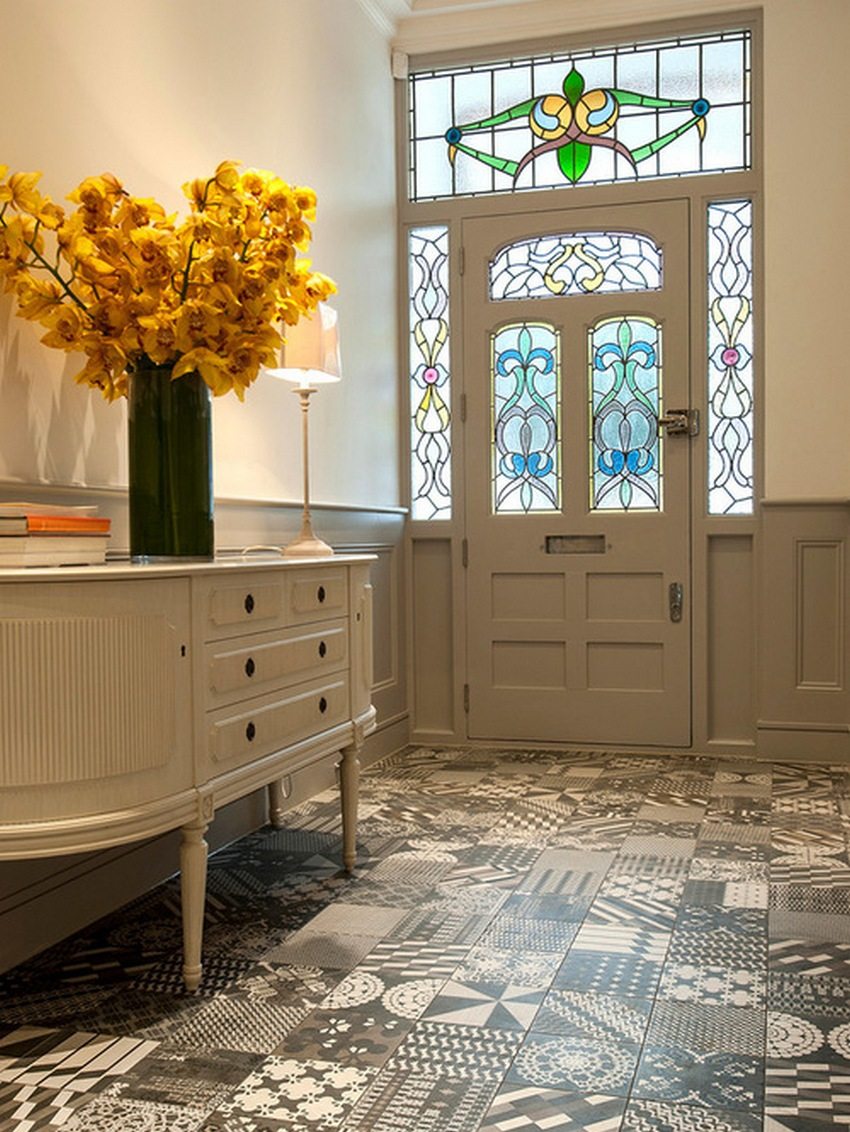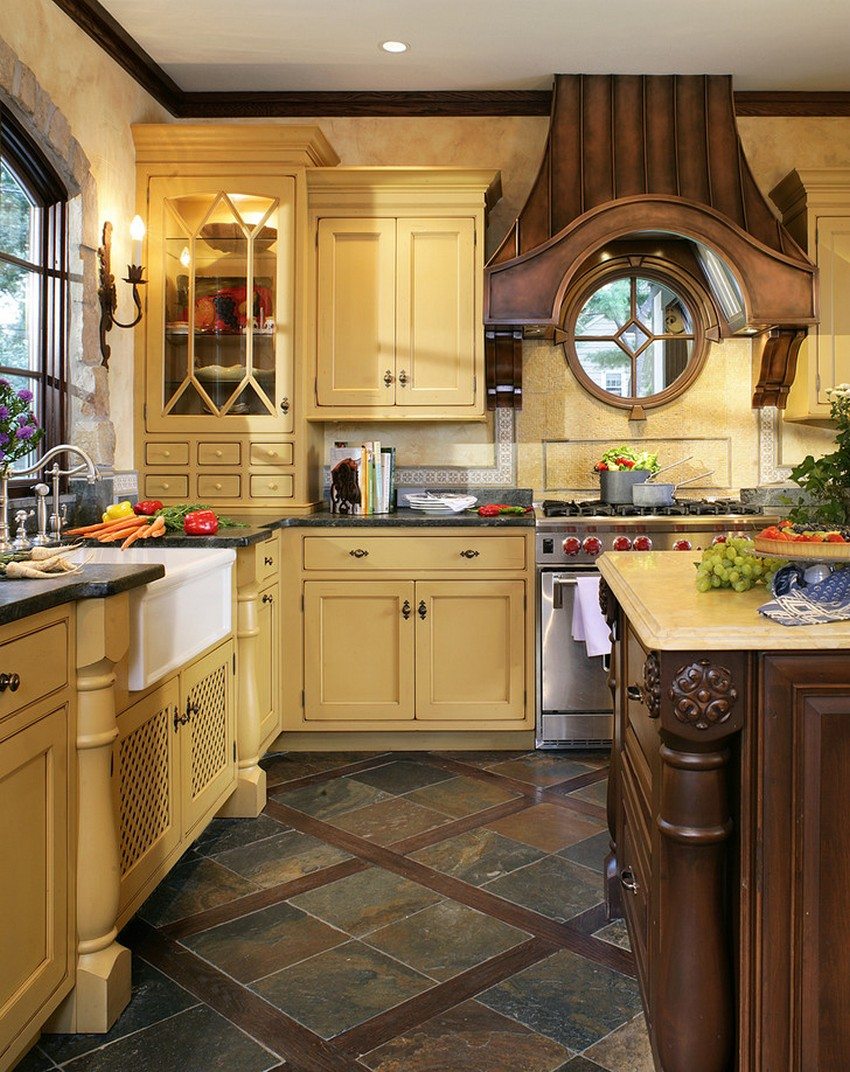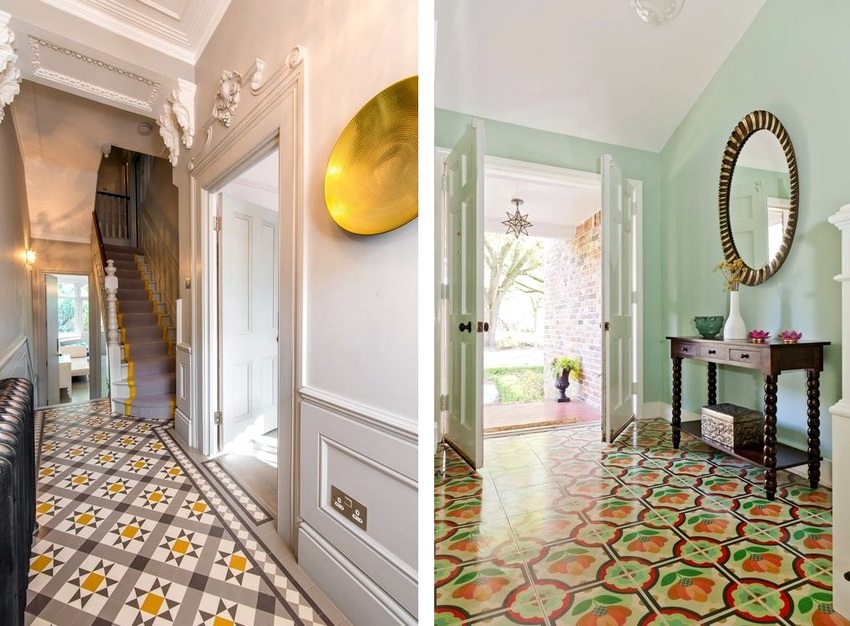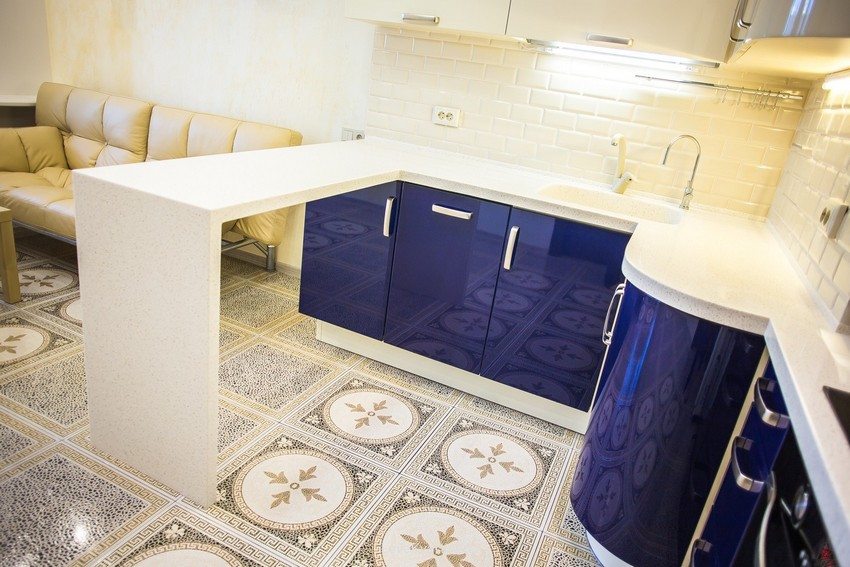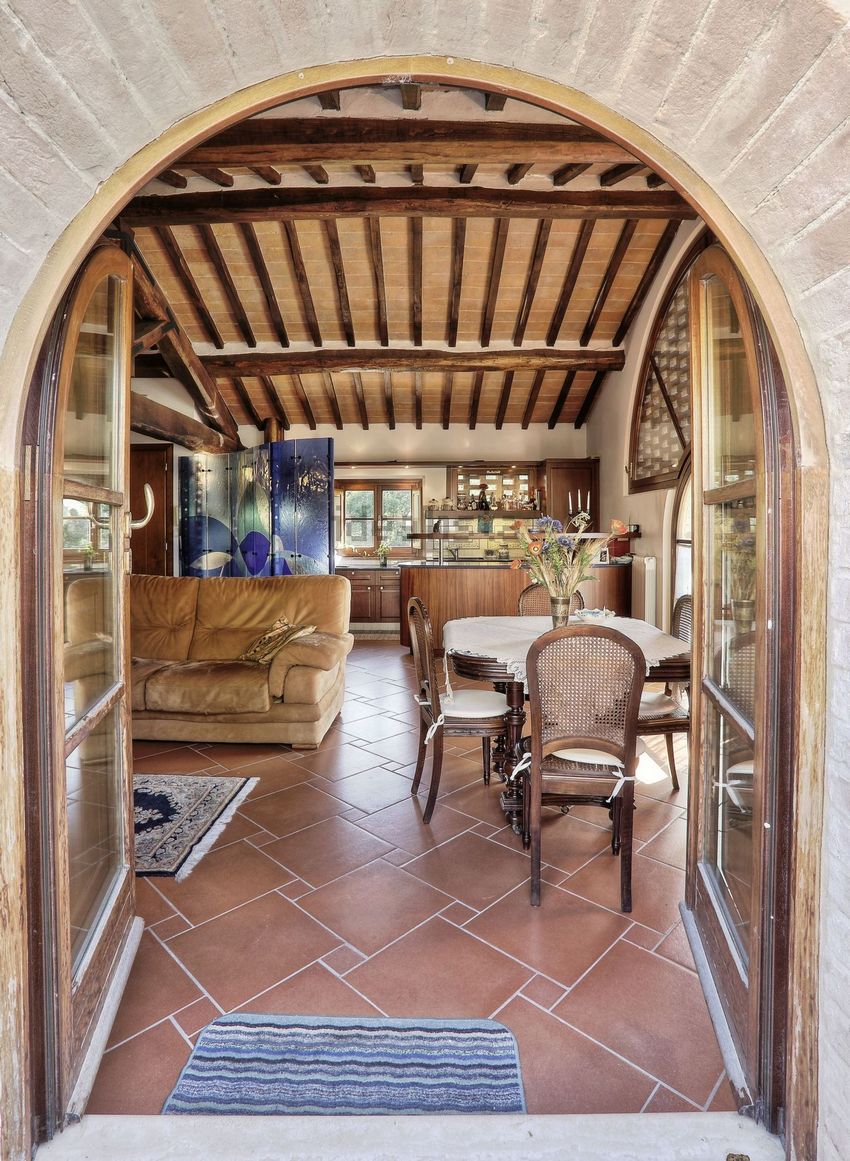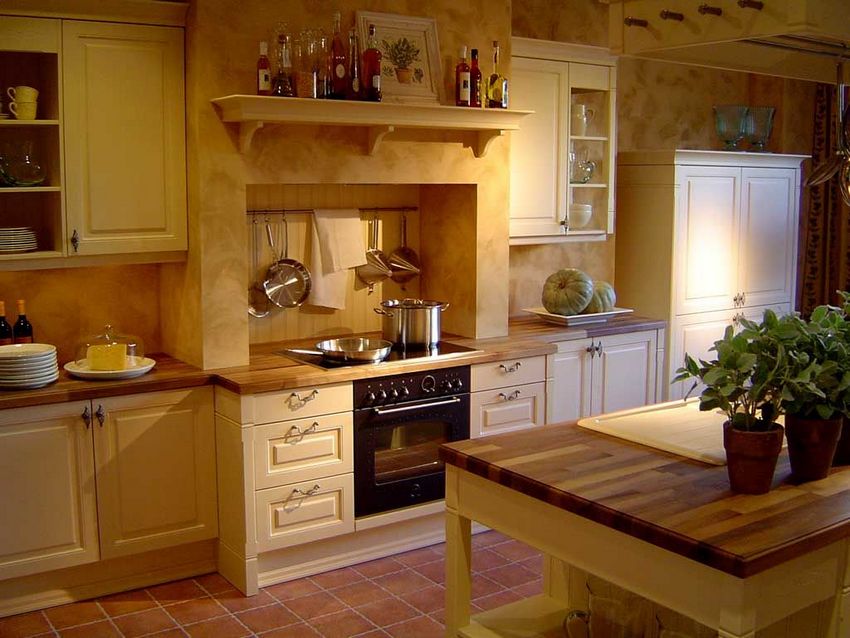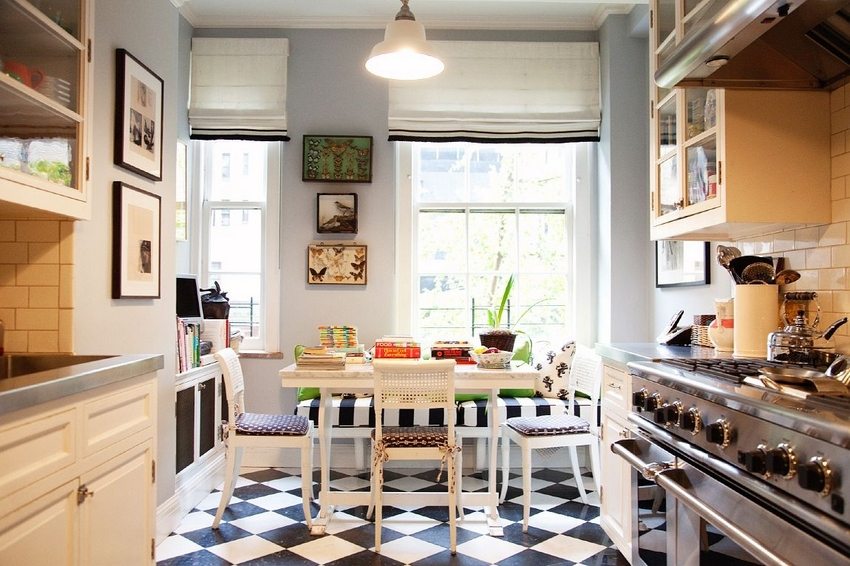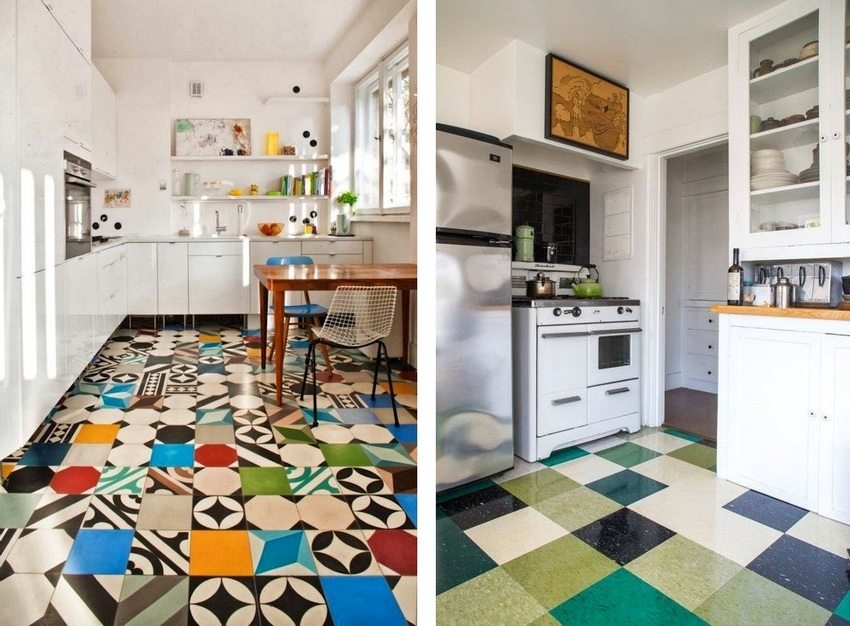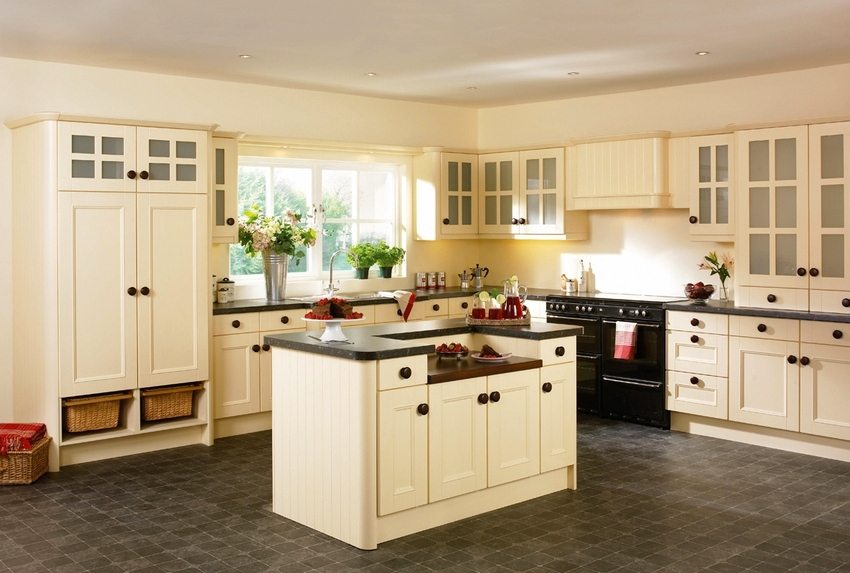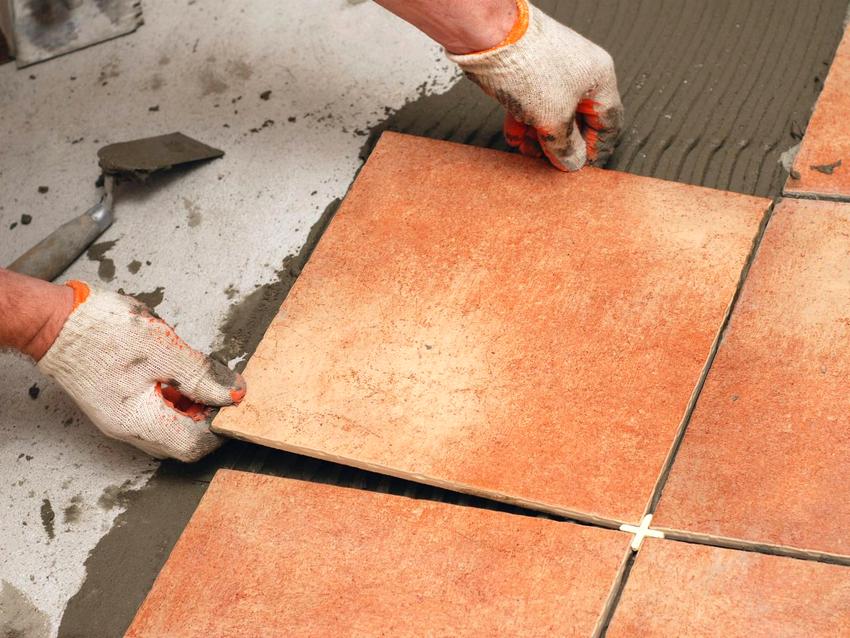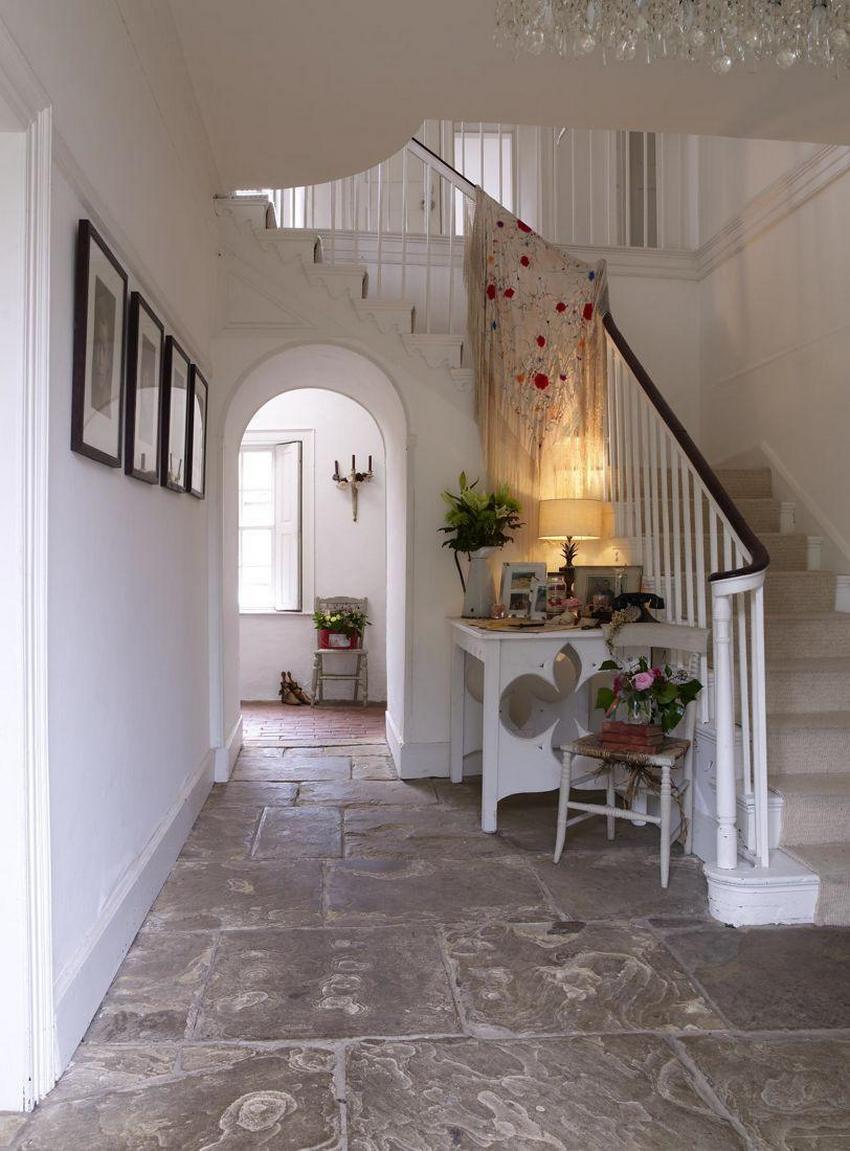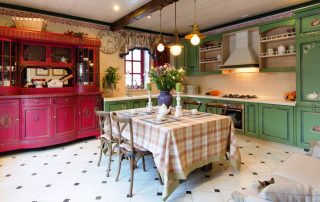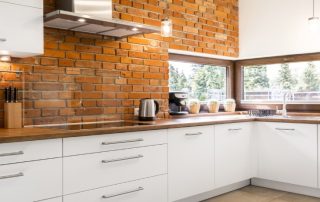Due to its aesthetic appearance and unique properties, the undisputed leader of finishing materials is the floor tiles for the corridor and kitchen: photos of modern interiors clearly demonstrate this. But how to choose the right tile among the many different offers on the market? Buying flooring is not an easy task that requires a careful approach to its solution. Indeed, to create not only a stylish, but also a high-quality interior, it is necessary to take into account the technical characteristics and features of this material. After reading the article and the proposed photos of floor tiles in the interior, you can easily make an independent choice.
Content [Hide]
- 1 Advantages and Disadvantages of Floor Tiles
- 2 Indicators of the quality of floor tiles in the corridor and kitchen
- 3 Sizes and shapes of tiles on the floor for the kitchen and corridor: interior design photo
- 4 Floor tiles for hallway and kitchen. Choice of color and texture
- 5 Floor tiles for corridor and kitchen. Photo illustrations of interior design options
- 6 How to properly lay tiles on the floor yourself
Advantages and Disadvantages of Floor Tiles
The tile has a number of advantages over other finishing materials:
- hygiene - tiles are considered the best finishing material for rooms with high levels of pollution. Smooth and even surface is easy to clean, does not accumulate dust and perfectly tolerates washing even with the use of aggressive household chemicals. The latter is a big plus, since kitchen floor and the corridor is constantly exposed to moisture, which can contribute to the appearance of mold and harmful bacteria;

In modern kitchen interior used floor tiles of different sizes and colors
- strength - with high quality laying tiles, it is able to withstand significant impact loads. In addition, it is not subject to mechanical damage and color loss;
- durability - a well-laid tile can last you up to 50 years without losing its visual appeal;
- moisture resistance - not afraid of high humidity and even flooding;
- fire resistance - ceramic tiles do not react in any way to an increase in temperature and will not burn in a fire;
- ease of restoration - in case of damage, there is no need to change the entire floor covering. You can easily replace a separate area, returning the interior to its original appearance;
- environmental friendliness - ceramic tiles are a material that is safe for health;
- a large selection - numerous options for colors, patterns, sizes, as well as a variety of tile textures make it possible to create not only practical, but also visually attractive design.
Specialized Internet resources will help you get acquainted with a variety of photos of floor tiles for the hallway. Prices for this material can be viewed on the websites of hardware stores.
But, like any coating, tiles have a number of disadvantages. We list the difficulties associated with laying tiles, and options for their elimination:
- poor-quality installation can lead to cracks, therefore, it is necessary to prepare an even and dry base in advance;
- tile has poor sound insulation properties. This disadvantage can be eliminated with the help of a special layer, which is laid at the stage of creating a screed;
- tile is a rather cold material. But at the same time, the tile has excellent thermal conductivity, so the problem can be solved by installing a "warm floor" system;
- the tile is a slippery surface, so it is better to give preference to tiles with a rough texture.
Indicators of the quality of floor tiles in the corridor and kitchen
To choose not only beautiful, but also high-quality tiles, pay attention to the marking. The manufacturer must indicate the following indicators on the packaging:
- PEI is the wear resistance level of ceramic tiles. Measured on a scale of 1 to 5;
- the percentage of moisture resistance of the material;
- the size of the floor tiles;
- resistance of the material to chemicals. The classification is carried out from D to AA, where D is the minimum indicator, AA is the maximum;
- the way the product was produced (the letter B stands for the pressing process, the letter A for extrusion);
- the hardness of the tiles. This indicator is measured on a ten-point scale of the MEP. The higher the number indicated on the package, the more hard the tile has;
- grade of tiles. It is easily recognizable by the color of the markings on the packaging. So, red color indicates 1 grade of material, blue color - 2 grade, green - 3. The higher the grade of the purchased product, the higher its price.
Ideal floor tiles for the corridor and kitchen: photos of the best finishing options
Characteristics that a tile intended as a floor covering in the hallway and kitchen should have:
- floor tiles in the kitchen and in the corridor must have a wear resistance class of at least PEI 3;
- the water resistance of the material should not be less than 3%;
- the coefficient of friction should not exceed 0.75%;
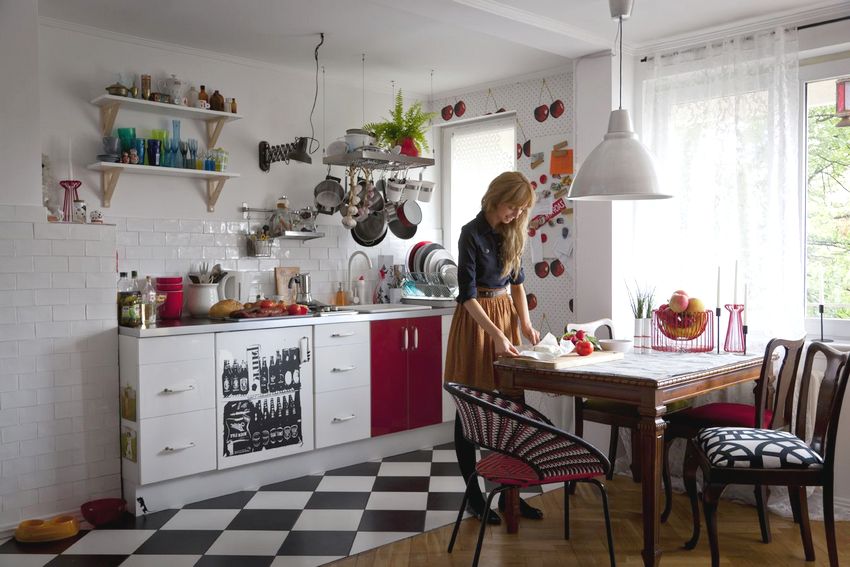
Ceramic tiles are ideal for installation of underfloor heating for kitchen
Useful advice! When choosing a floor covering for a corridor and a kitchen, it is not necessary to buy oversized tiles.In practice, you are unlikely to notice a big difference, but the price of such products is much higher than for the same materials with average indicators.
Sizes and shapes of tiles on the floor for the kitchen and corridor: interior design photo
The standard sizes of floor tiles are 30x30 cm, 20x30 cm, 20x25 cm, 20x20 cm, 10x15 cm, 10x10 cm.However, now you can buy products in larger sizes - 40x40 cm, 60x100 cm, 70x120 cm.
The most common forms of tiles are square and rectangle (in this case, the aspect ratio can be absolutely any - 1/2, 1/3, etc.). Elongated "sticks" are much less common.
Floor tiles for hallway and kitchen. Choice of color and texture
Choosing a tile, you will come across a huge assortment of this finishing material. Tiles differ from each other not only in size and shape, but also in texture and color.
Related article:
What warm floors are better for tiles: reviews of types of floors. Advantages and disadvantages of each type. Features of installation of water and electric underfloor heating under tiles. Installation of infrared warm floor.
Which option should you give preference to? Here are some tips for choosing this flooring:
- for the kitchen and corridor, it is better to choose tiles with a rough surface. This will reduce the level of slipping, but it should be borne in mind that dust and dirt will accumulate in the recesses of an overly textured tile. At the same time, products with a glazed surface have greater moisture resistance and increased strength. It perfectly illustrates how such a tile looks in the corridor on the floor; photos available on the Internet;
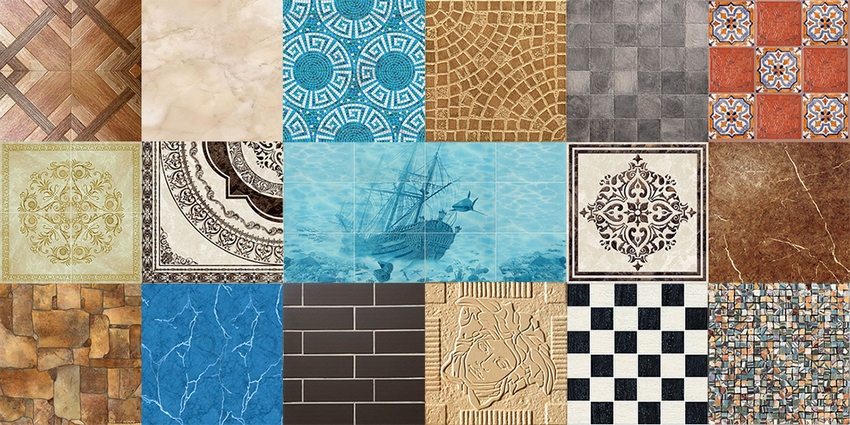
A variety of shapes, patterns and different sizes of tiles will create a unique interior in the room
- when choosing a tile color, it is important to consider the overall interior design. Most often, preference is given to tiles of light colors with a monochrome surface. To do this, you can use not only ceramics, but also porcelain stoneware for the floor (photos of the design of such interiors are widely presented on the network);
- a light floor is able to significantly expand the room visually;
- dark tiles are permissible only in a spacious hallway (kitchen), while requiring light shades for furniture and other interior details;
- keep in mind that black and white tiles are very easily soiled options, but combining tiles in these colors is not an out of fashion option. They lay such a combination in a checkerboard pattern or diagonally with rhombuses;

Porcelain stoneware tiles distinguished by environmental friendliness and fire resistance
- the most successful colors for finishing these rooms are gray, brown and beige;
- a matte surface is more practical than a glossy one. On such a floor, dirt and scratches are less noticeable;
- tiles that imitate natural stone will look very stylish. Such a tile is suitable for creating a classic or "rustic" interior;
Floor tiles for corridor and kitchen. Photo illustrations of interior design options
The color of the selected flooring directly depends on whether there are windows in the room being decorated and where they go. So, if there are no windows in the corridor or they are facing north, it is better to give preference to plain light tiles. A dark coating will take in too much light.
If the windows in the room face south, you can use more saturated colors.
When choosing the size and shape of the tiles, it is important to consider the area of the room. Large square tiles are perfect for a spacious kitchen or hallway, and, for example, using rectangular tiles, you can visually lengthen a short corridor. Looking through the photo of floor tiles for the hallway, you will see examples of such work with space.
A variety of patterns and ornaments are perfect for designs with ethnic motives; in rooms decorated in a minimalist style, it is preferable to use tiles with a monochrome surface, and bright colored floors will be appropriate in a modern interior.
Useful advice! So that the floor does not look monotonous and boring, you can combine large tiles and small decorative tiles with an interesting pattern. Such small original inserts can be done both in the center of the room, and by distributing them evenly between monochromatic areas.
How to properly lay tiles on the floor yourself
The service life of the flooring directly depends on how well you prepare the base. The concrete floor must be leveled before laying the tiles. For this, a special composition is used, after which they must be checked using a level. After the solution has dried, a primer is applied to a clean and dry surface.
Before starting to lay the tiles, the marking is done - taking into account the size of the tiles. But some masters recommend just starting from the corner. After mixing a special adhesive solution, apply it to the surface with a smooth spatula. After that, the adhesive must be smoothed out with a notched trowel.
It is not difficult to prepare tile adhesive yourself. To do this, use a construction mixer or drill with a special attachment. Dissolve the dry mixture in water according to the instructions and mix thoroughly. The finished product must be left to stand for 15 minutes, and then mix well again. This will produce a uniform solution.
Useful advice! Do not mix a large amount of glue right away, otherwise it may begin to dry out even before it is used. It is better to repeat the process 2-3 times.
It is very convenient to use a notched trowel with one smooth side to apply tile adhesive. The finished solution is applied to the floor surface over an area of no more than one square meter and on each tile separately. It is important not to forget that the direction of the grooves on the tile and on the floor must be different. This promotes better adhesion of the adhesive after drying.
Special spacer crosses will help you make the seams between tiles even and parallel to each other. Next, the already laid tiles are adjusted to the level by gently tapping with a rubber mallet.
After the mortar has completely dried, it remains only to rub and process the tile joints. Use a rubber spatula to do this.
Useful advice! Over the next two to three days, the seams must be moistened with water. This contributes to their uniform drying and prevents deformation.
It is quite possible to independently choose and lay tiles for the floor in the kitchen and in the corridor.Using the advice of experts presented in the article, you can realize any of your ideas, creating a unique interior.
